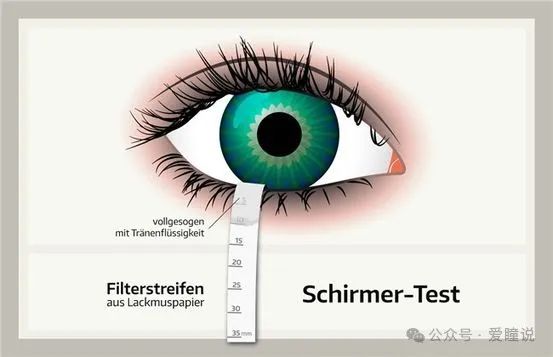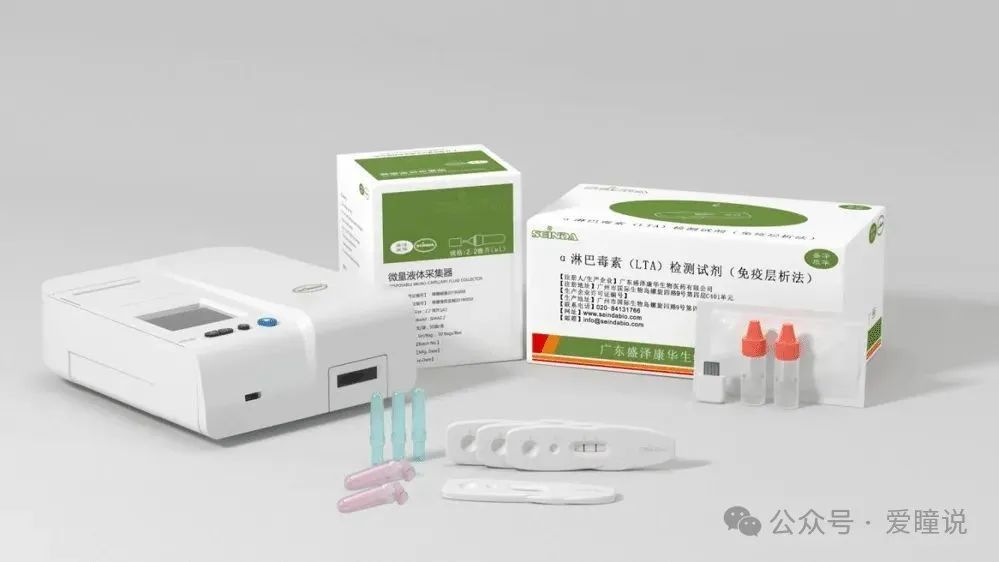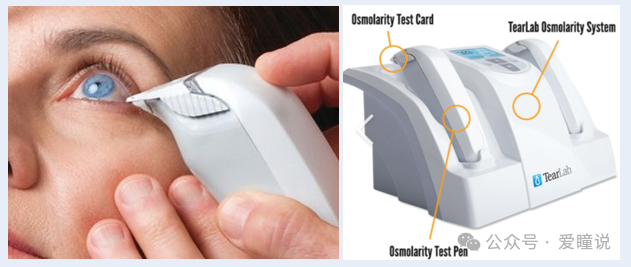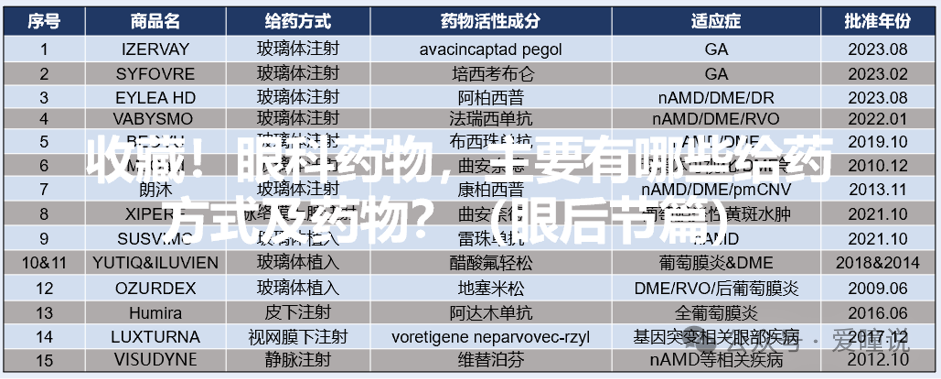With the development of dry eye diagnosis and treatment technology, the popularization of basic knowledge about dry eye in ophthalmic medical institutions has led to a continuous increase in the clinical diagnosis rate of dry eye. According to a report by Zhi Shi Consulting, the current diagnosis rate of dry eye in China is only about 15.1%, far lower than the 45.2% (2019) diagnosis rate in the United States. It is expected that the domestic diagnosis rate will reach 21.8% by 2025 and increase to 33.4% by 2030.
According to the “Chinese Expert Consensus on Dry Eye: Examination and Diagnosis (2020)”, common examination techniques for dry eye include: dry eye questionnaire scale, tear film stability testing, tear secretion quantity testing, ocular surface cell staining, ophthalmic imaging examinations, laboratory auxiliary examinations, eyelid margin and meibomian gland examinations, and systemic examinations. This article mainly introduces laboratory auxiliary examinations and ophthalmic imaging diagnostic instruments for dry eye.
1. Tear Secretion Quantity Testing
One of the most important examinations for dry eye is the tear secretion quantity test. The most commonly used tear secretion test in clinical practice is the Schirmer test, which assesses tear secretion quantity. The tear secretion detection filter paper, also known as Schirmer’s filter paper, is a commonly used tool for measuring the amount of tear secretion in the eyes. This filter paper is typically long and strip-shaped, with one end placed in the conjunctival sac of the patient’s lower eyelid, and the filter paper gradually absorbs tears, forming a mark. The length of the mark is used to assess the quantity of tear secretion. Schirmer’s filter paper generally has good water absorption performance, tensile strength, and water resistance, causing no discomfort or irritation to the ocular tissues, and is easy to use and cost-effective, making it one of the commonly used measurement tools for ophthalmologists and patients. The principle and method of using phenol red cotton thread detection are similar to Schirmer’s filter paper.

In 2021, Ruilin Company introduced a new type of tear secretion diagnostic test strip, Sumu® Tear Secretion Detection Filter Paper Strip, which can detect tear secretion quantity in 5 seconds, significantly shortening the testing time and reducing irritation to the ocular surface, thereby improving patient comfort. Its basic principle is to add capillaries to the test strip. When the front end of the Sumu ® test strip is immersed in the tear lake of the lower eyelid, the hollow tube groove structure in the middle of the test strip absorbs tears through capillary action. The blue indicator at the front end of the test strip marks and reads the length of the stained tear band to quantify the volume of the tear lake.
Currently, the main companies producing and selling tear secretion detection filter paper in China include Tianjin Jingming, Ruilin Pharmaceutical, Opcon Vision, Aibono, Meizilin, and InnoXinkang, among others.
2. Matrix Metalloproteinase-9 (MMP-9) Testing
Matrix metalloproteinases (MMP) are protein hydrolytic enzymes produced by stressed epithelial cells on the ocular surface. In particular, MMP-9 is a non-specific inflammatory marker, and the level of MMP-9 in tears has been shown to correlate positively with the severity of dry eye disease. Studies have shown that patients with more severe dry eye disease have higher levels of MMP-9. Identifying the presence of ocular surface inflammation through objective measures is crucial for the treatment of dry eye disease.
The normal level of MMP-9 in human tears is between 3 ng/mL and 40 ng/mL. In patients with moderate to severe dry eye disease, MMP-9 levels are elevated, and changes in corneal epithelial barrier function are the cause of eye irritation and visual disorders in dry eye disease. The elevation of MMP-9 in dry eye disease may lead to disruption of corneal epithelial barrier function, increased corneal epithelial shedding, and irregularities on the corneal surface. The InflammaDry kit from Quidel Corporation (Nasdaq: QDEL) can detect MMP-9 levels of ≥40 ng/mL in tears, in conjunction with other clinical assessment methods to confirm the diagnosis of dry eye disease in suspected patients. Currently, the matrix metalloproteinase-9 (MMP-9) testing kit has not been approved for sale in China.

3. Lymphotoxin α (LTA) Testing
Lymphotoxin α (LTA), also known as tumor necrosis factor β (TNF β), is currently studied mainly in relation to autoimmune diseases and anti-tumor effects. For example, primary dryness syndrome is a common autoimmune disease that initially damages the salivary and lacrimal glands, leading to tear deficiency type dry eye, which can subsequently cause damage to the lungs and kidneys, and some patients may develop into large B-cell lymphoma. LTA, as a protein molecule secreted by T lymphocytes, is likely to directly participate in the pathophysiological process of dry eye onset.In 2020, Guangdong Shengzekanghua Biopharmaceutical Co., Ltd. received approval for the exclusive α-lymphotoxin (LTA) testing reagent for auxiliary diagnosis of dry eye disease.

4. Tear Osmolarity Testing
Changes in tear film osmolarity are considered a key feature of dry eye. However, this test has not been widely adopted until 2009 when the FDA approved a commercial instrument TearLab for use in medical point-of-care laboratory testing to diagnose dry eye. In the American Tear Film and Ocular Surface Society Dry Eye Workshop (TFOS-DEWS I, 2007), tear osmolarity was listed as an important criterion for diagnosing dry eye disease (DED). However, in subsequent clinical practice, it was found that this assessment method had low specificity and sensitivity, and considerable variability, thus high tear osmolarity is no longer considered the gold standard for diagnosing DED but rather a secondary reference. The American “Clinical Practice Guidelines for Ophthalmology (3rd Edition)” mentioned that from a cost-benefit perspective, measuring tear osmolarity may not be necessary for the clinical diagnosis of dry eye. Currently, such products have not been approved for sale in China.

Considering the elevated osmolarity (high salt content) in the tear film of dry eye patients, several eye drops designed for dry eye, such as Xiidra (Lifitegrast eye drops), have been formulated to have lower osmolarity to neutralize the salt content in the tears during use, improving patient comfort.
5. Dry Eye Diagnostic Instruments
In terms of dry eye detection diagnostic equipment, the commonly used dry eye diagnostic instruments in clinical practice are primarily dry eye detectors and meibomian gland imaging devices:
Recently approved dry eye detectors use tear film interference imaging of the ocular surface to diagnose the severity of dry eye. Most dry eye detectors are domestically produced, with manufacturers including Chongqing Kanghuariming, Chongqing Shangbang, Shenzhen Moting, Shanghai Meiwo, and more than 10 other companies. Imported ocular surface interferometers mainly include LipiView® from TearScience (distributed by EyeCare) and IDEA Ocular Surface Interferometer from SBM (distributed by Gaoshi).
Meibomian gland dysfunction (MGD) is a common cause of dry eye. The tear film consists of the aqueous layer, lipid layer, and mucin layer. The lipids secreted by the meibomian glands are evenly spread across the ocular surface through blinking, preventing tear overflow and delaying moisture evaporation. If the meibomian glands are blocked or if the quality and quantity of secretions change, there will be insufficient lipids in the tears, leading to a decrease in water retention function, resulting in excessive evaporation and consequently causing dry eye. The LipiScan® meibomian gland imaging device developed by EyeCare captures images of the meibomian glands of the patient, completing bilateral meibomian gland imaging in 1 minute, providing objective data for the diagnosis of dry eye.

Conclusion
Overall, the terminal prices of dry eye detection and diagnostic instruments are generally low, with the overall market size in China being around 1 billion yuan. With the launch of new dry eye diagnostic equipment, the popularization of dry eye knowledge, and the increase in clinical demand, there is still considerable growth potential in the domestic dry eye detection and diagnostic market.
END
This article is intended solely for the purpose of information dissemination among medical peers and is for reference only.


Click the lower left corner + follow , not to get lost
If you like this article, click the lower right “See”